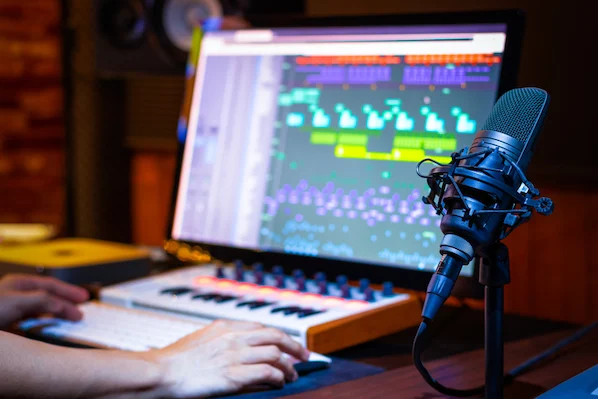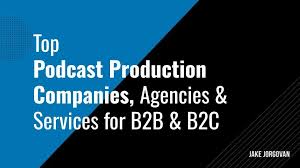
Podcast Branding Strategies .Think back to the last time you read an email that truly grabbed your attention. Chances are, it’s rare. In contrast, well-produced podcasts driven by genuine enthusiasm and passion can be captivating and enjoyable. Your employees are more likely to remember and understand your messages when delivered through. Podcast production tips a podcast rather than a traditional email.Convenience to listen anytime and anywhere. This flexibility boosts the likelihood that employees will engage with your content and pay full attention to your message.Reduces Screen Fatigue: Constantly staring at screens can be exhausting. Podcasts give your team a chance to rest their eyes while still receiving important updates or insights.
How to start a podcas. When selecting the host for your podcast, it’s crucial to pick someone who can speak confidently, engage listeners, and create a connection with the audience. You can choose a team member from within your organization or hire an external professional—what matters most is that the host is enthusiastic and committed to the role. If you plan to feature additional speakers or guests, it’s a good idea to line them up ahead of time. Look for individuals who have experience or insight in your podcast’s subject area and who can share a compelling story or perspective that will captivate your listeners. Branding your podcast
To make your podcast memorable, focus on crafting an attention-grabbing title and visually appealing cover art. Since first impressions are often based on the cover, aim for something distinctive and easily recognizable. Your podcast’s title and artwork should reflect the theme and tone of your content. Some large brands rely heavily on their reputation; for instance, Netflix’s WeAreNetflix podcast highlights the company’s name and logo as the central element of its branding
Podcast recording equipment plays a crucial role in how professional and credible your show feels. While having engaging and insightful conversations is essential, the quality of your audio is just as important. Poor sound quality or unclear discussions can quickly turn listeners away. When selecting your gear, keep the following in mindChoose a microphone that suits your recording environment. In spaces that aren’t fully soundproof, a dynamic microphone is ideal. It captures sound from the front (your voice) while minimizing background noise from the sides and rearOn the other hand, condenser microphones are highly sensitive and can pick up subtle details in your voice. They work best in soundproof studios and are perfect for vocal-focused recordings. Condenser mics require an external power source, whereas dynamic microphones do not.
Podcast editing software is essential for producing polished audio. Before you hit record, make sure your microphone is positioned about 1–2 feet from your mouth to prevent muffled sound. It’s also important to understand how your microphone works, so read the manual or any provided instructions.Another choice to make is whether to use a USB or XLR microphone. USB mics are straightforward and ideal for beginners—simply plug them into your computer and open your recording program.XLR microphones, on the other hand, are more durable and tend to deliver higher-quality sound because they transmit a balanced signal that minimizes background noise. They require XLR cables and possibly an additional recording device, but they’re a smart investment for long-term podcasting.
You’ll also need a reliable set of headphones, preferably with noise-canceling features. While standard earbuds like AirPods or Beats can work, noise-canceling headphones help you clearly hear yourself and your guest while preventing your mic from picking up speaker output, which could create echoes or feedback.Finally, always charge and test your equipment before recording. This ensures a smooth session and prevents any unexpected technical issues.
Best podcast hosting platforms work hand-in-hand with editing. It’s essential to review your recordings after each session. To make the recording and editing workflow smoother, consider using remote recording tools.These tools help you avoid the high costs of professional studios, letting you record and manage sessions from your own space. You can also easily refine and modify your recordings afterward.Be sure to explore our guide on remote recording tools, where we outline the benefits and pricing of each option. When it comes to editing, tackle your recording step by step. Take notes on the adjustments you make, so when you revisit your project, it’s clear what changes were implemented and what might still need attention. Here are some essential tips for editing:
Podcast scriptwriting should consider optimal episode length. Most listeners prefer podcasts that run between 15 and 60 minutes, with the sweet spot often falling around 20 to 40 minutes. Episodes that are significantly shorter or longer may be skipped or left unfinished.It’s important not to force your content into a specific timeframe unless necessary. For instance, if a 15-minute episode delivers valuable information relevant to your title and engages your audience, there’s no need to extend or shorten it. Remember that raw recordings are usually longer than the final edit, so be prepared for a few minutes to be trimmed during post-production.
Publishing and promoting your podcast comes after recording and editing. Simply uploading your episode isn’t enough—you need strategies to connect with your audience. If your podcast is intended for internal use, promote it through company emails or internal communication tools like Slack, Microsoft Teams, or Skype.If your aim is to reach both employees and the broader public, you’ll want to boost visibility through marketing efforts. Social media is typically effective, but consider the platforms your target audience frequents most.
Podcast interview techniques: Maintaining consistency is crucial for podcasting. Set up a structured timetable that includes recording sessions, editing milestones, and publishing dates. This helps your team stay aligned and allows your audience to anticipate new episodes.As noted before, booking your guests ahead of time is smart. To take it further, consider compiling a comprehensive list of potential interviewees.Another way to streamline your workflow is by creating templates for emails, interview questions, episode scripts, artwork, and blog posts. Once you establish a clear framework and expectations, these tasks become much faster and more efficient.Pro tip: To prevent last-minute stress before publishing, aim to work several weeks ahead. This ensures you’re always ahead of schedule.
How to monetize a podcast starts with recognizing that podcasting demands time, expertise, and consistency. You don’t need to handle every detail yourself. By collaborating with a Podcast Agency, you can stay focused on your core goals while the agency manages everything behind the scenes.
This kind of partnership not only saves you time and resources but also simplifies your workflow. Instead of coordinating a team or juggling multiple service providers, you gain a complete production process in one place—elevating the quality and reach of your podcast. With extensive experience launching numerous shows, they can manage everything from strategy and content creation to recording, editing, and marketing. Another key advantage is access to actionable data. Agencies provide insights on listener habits and audience trends, empowering you to make informed decisions that grow your podcast and revenue potential. Finally, credibility matters. With industry connections and expertise, your team can help secure the right hosts, attract top-tier guests, and position your brand professionally from the very first episode.
Podcast branding strategies benefit from having a clear script to follow, helping you stay focused and ensuring you don’t drift off-topic or skip key points.You want your story to unfold in the most engaging way possible. One approach is to think of your narrative as a series of questions that you’re planting in the listener’s mind and then answering throughout the episode,” Stevie explains. “It also helps to incorporate elements of surprise. Consider how you can reveal information in a way that catches the audience off guard. For instance, was there something you initially believed that turned out to be false? How can that twist be woven into your story?”When planning interviews, Stevie recommends preparing documents with a structured list of questions. “Arrange your questions in a sequence that supports the storytelling—whether that’s chronological or designed to guide your guest through each point logically. You also want questions that prompt detailed responses, helping your guest expand on their experiences.
Podcast marketing ideas start with understanding your requirements and budget. The type of podcast you plan to produce will influence the equipment needed for a clear, professional-sounding recording.
“If you’re running a roundtable discussion with four participants, you might choose a laptop with recording software, a compact audio interface that supports four microphones, and four mics positioned on stands around the table,” he suggests. “Alternatively, you could use an omnidirectional microphone in the center to capture everyone’s voices evenly. On the other hand, if you’re producing a solo narrative podcast with occasional music, archival clips, and interviews, a simpler setup—just a microphone and a few additional tools—can be sufficient.”If your budget allows, you could invest in a more advanced laptop, an audio interface with multiple inputs and outputs, and equipment that lets you record phone calls, interviews, or video calls. However, thanks to modern technology, these aren’t absolutely required.
“There are phone apps that record calls, high-quality microphones that connect directly to your phone, and digital audio workstations that run on mobile devices,” Bobby notes. “It’s entirely possible to produce a professional-sounding podcast using just your phone.”



